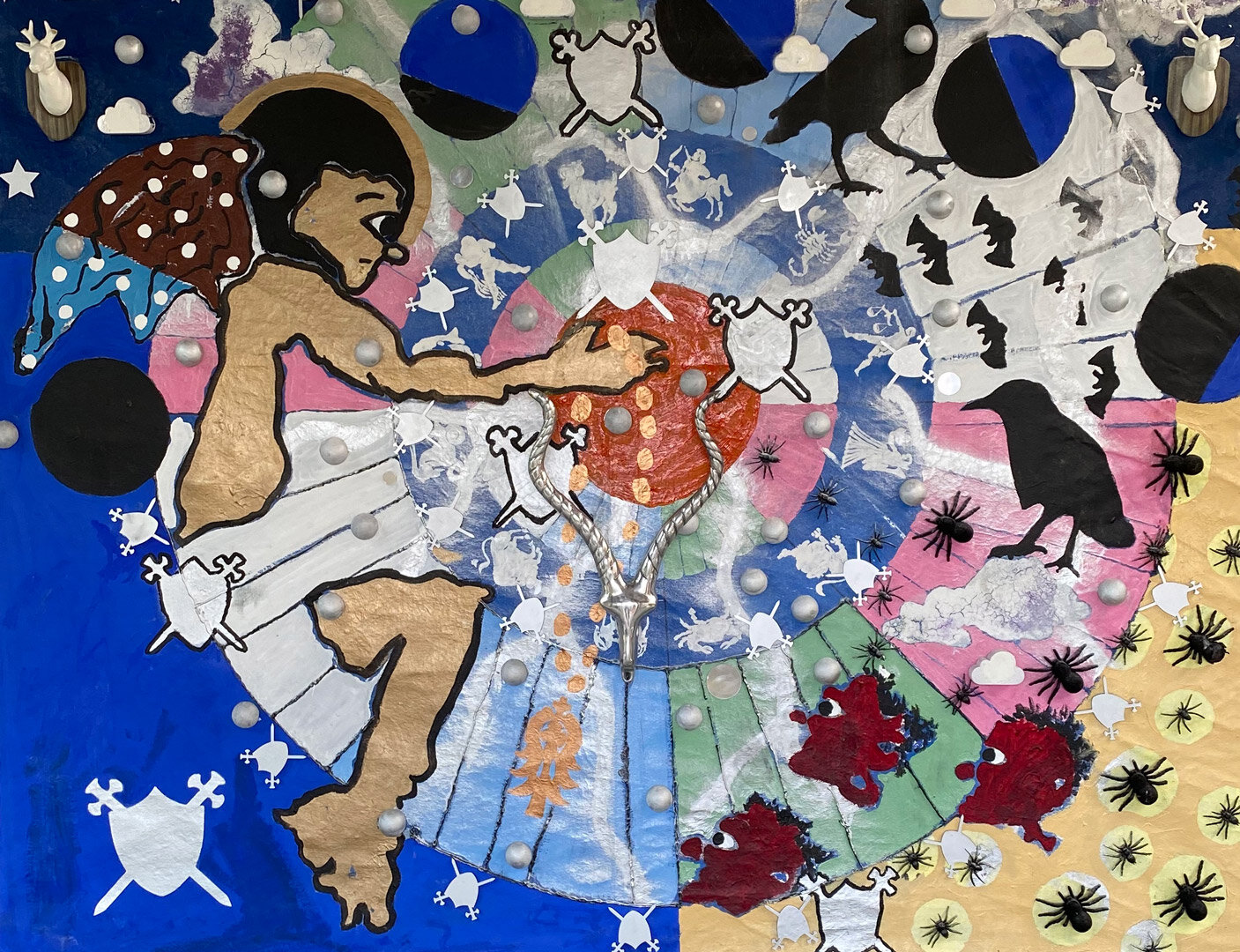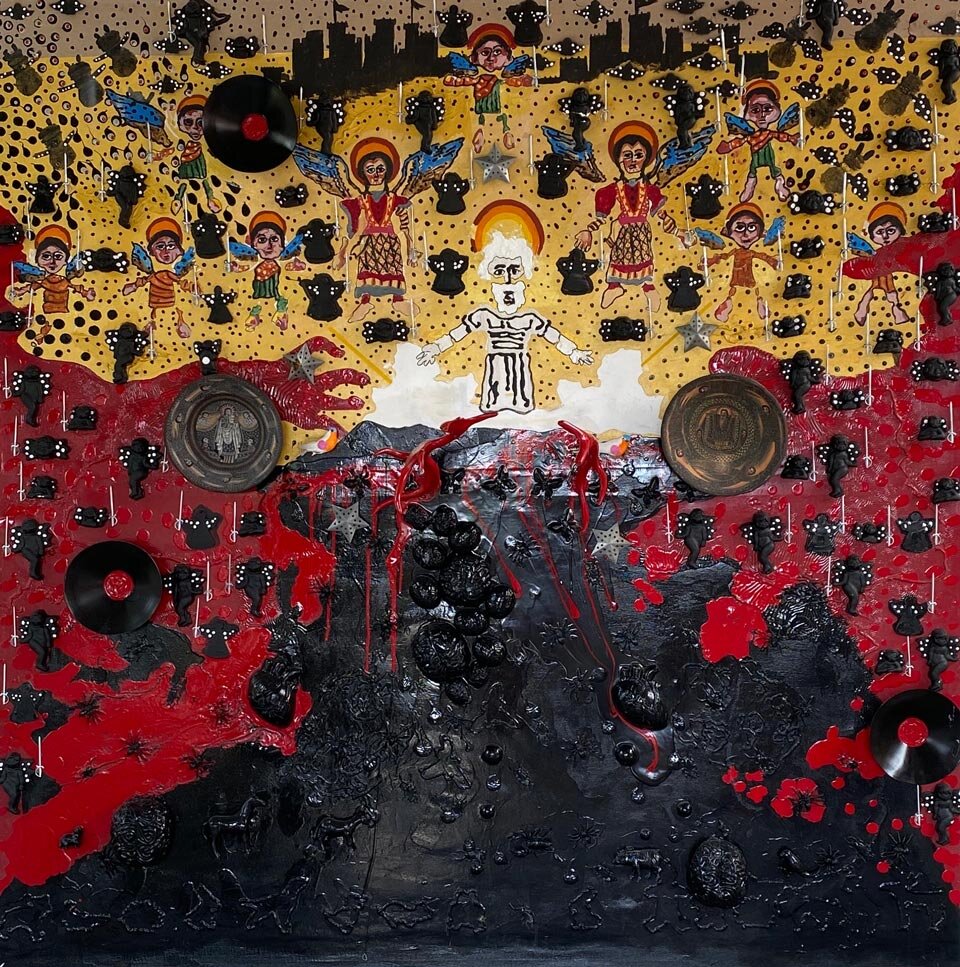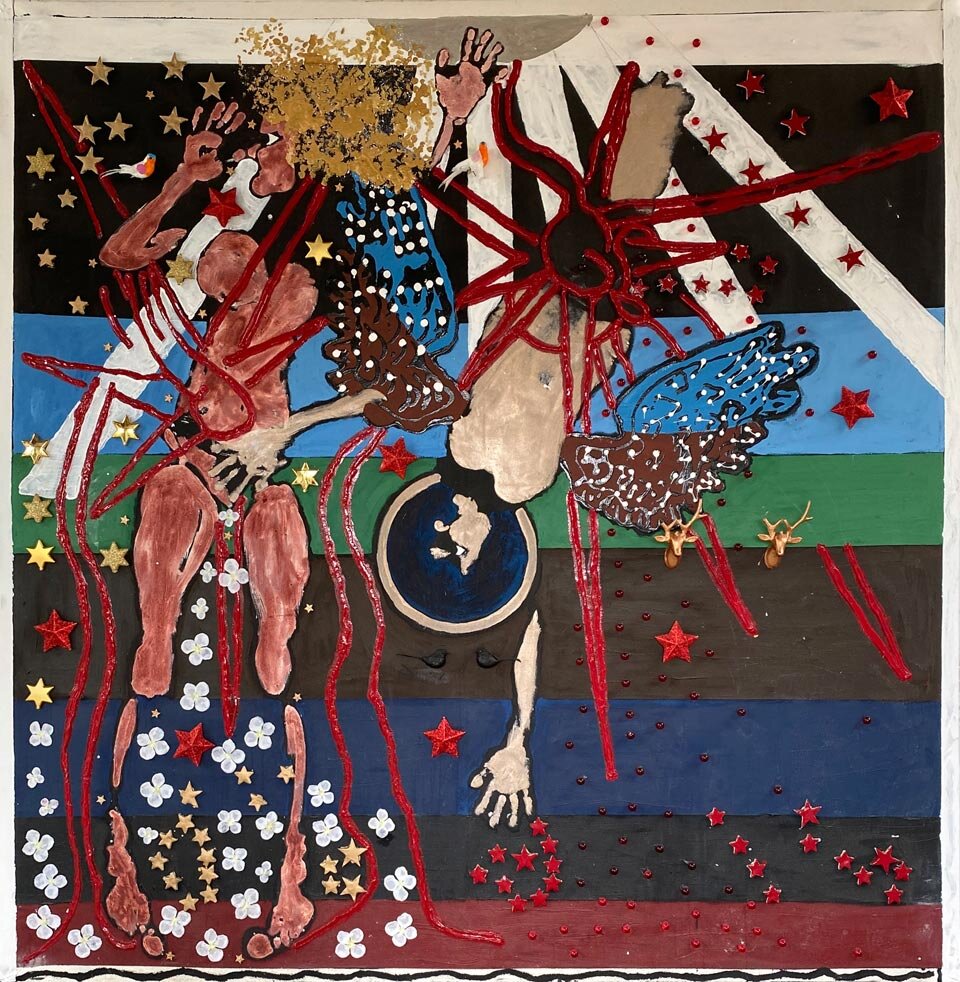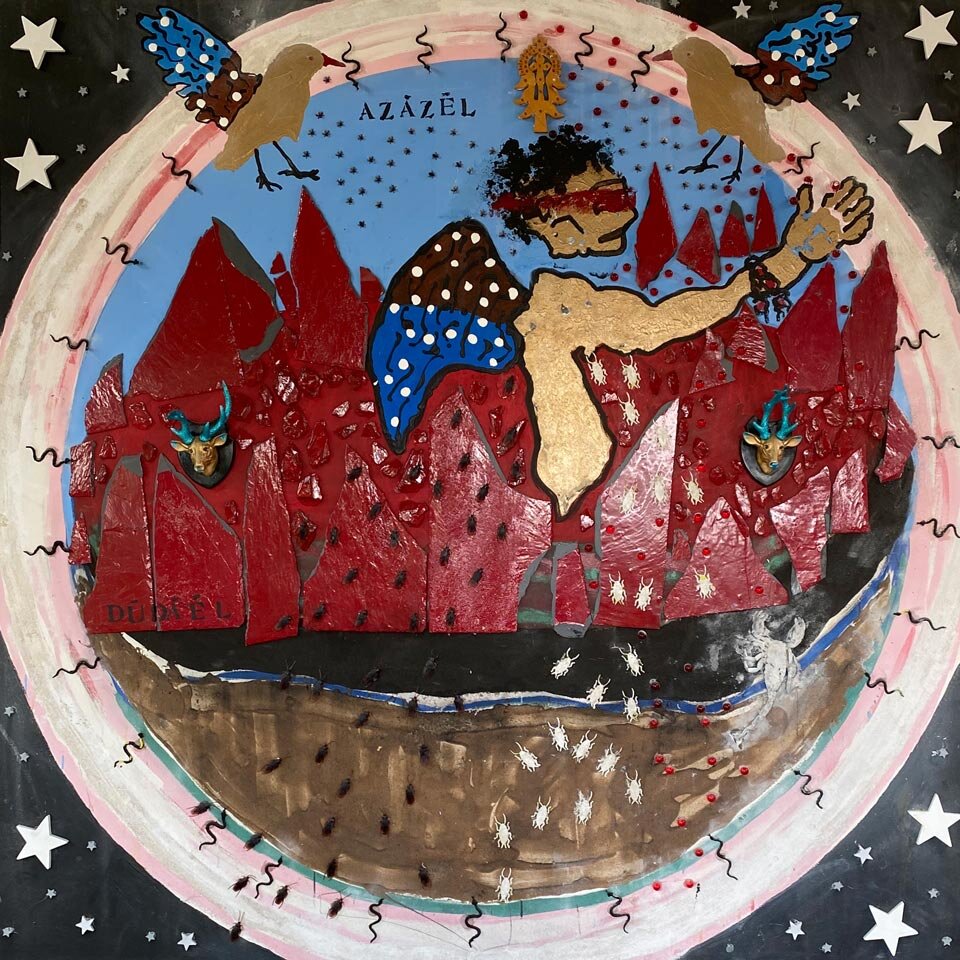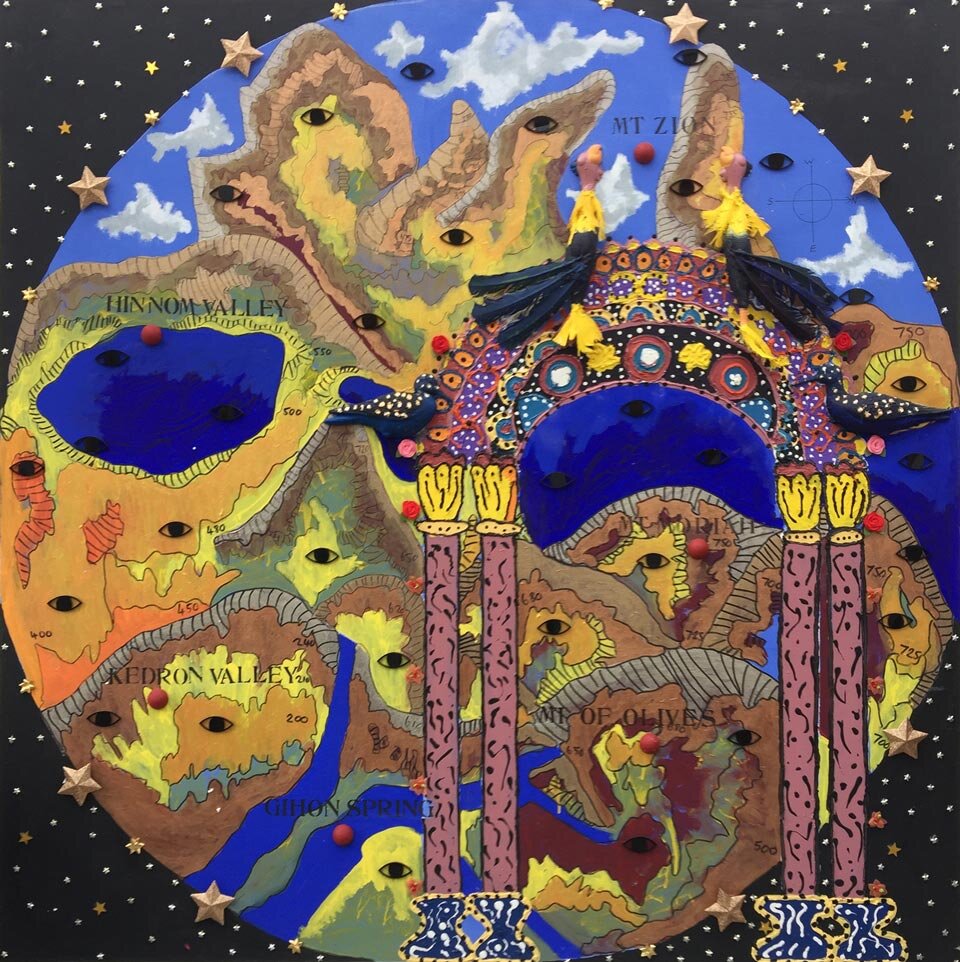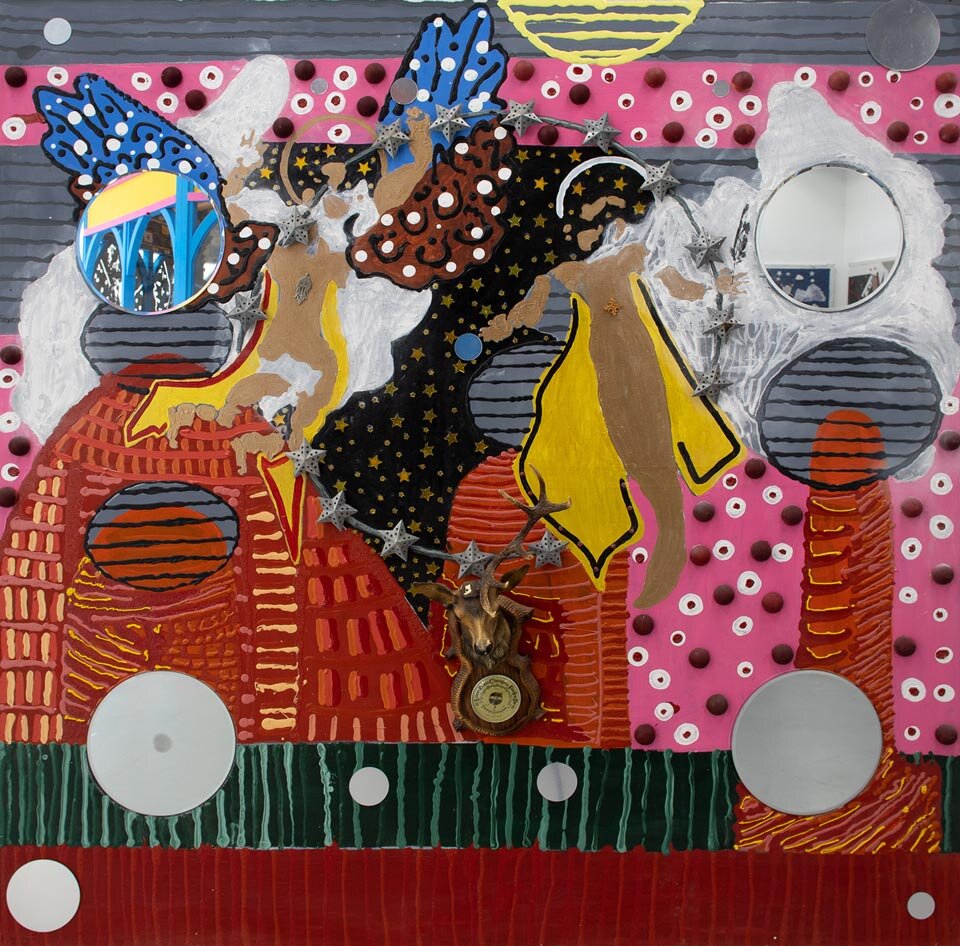Asael Teaching Metalwork
(1 Enoch 8:1)
By Philip Esler and Angus Pryor
1 Enoch 8 contains a fuller list of what the Watchers taught human beings, anthrôpoi in the Greek version (that is, not just men). It begins like this:
Asael taught human beings to make swords of iron and weapons and shields and breastplates and every instrument of war. He showed them the metals of the earth and how they should work gold to fashion it suitably, and concerning silver, to fashion it for bracelets and ornaments for women. And he showed them concerning antimony and eye paint and all manner of precious stones and dyes. And the sons of human beings made them for themselves and for their daughters … (8:1).
There follows a list of another eight Watchers and what each of them taught:
- Shemihazah taught spells and the cutting of roots.
- Hermani taught sorcery for the loosing of spells and magic and skill.
- Baraqel taught the signs of the lightning flashes.
- Kokabel taught the signs of the stars.
- Ziqel taught the signs of the shooting stars.
- Arteqoph taught the signs of the earth.
- Shamsiel taught the signs of the sun.
- Sahriel taught the signs of the moon.
The latter part of this list reflects benign cosmographical knowledge of a Babylonian origin, of the sort that the Enochic scribes prided themselves on possessing. Nevertheless, the text goes on to say ‘And they all began to reveal mysteries to their wives and to the children’, and then adds ‘And as human beings were perishing, the cry went up to heaven.’ 36 This final statement confirms that the overall effect of the revelations was adverse to humanity, especially on account of the item mentioned first in relation to Asael—weaponry—in view of the Enochic scribes’ horror of violence.
The amplitude of the knowledge passed on to human beings by these heavenly intermediaries and the fact that they would subsequently be punished by God for abandoning their post in heaven strongly suggests that all of this is a variant of an older myth also represented by Prometheus (as told most fully in the play Prometheus Bound by Aeschylus). Prometheus’ main gift to humanity was fire, but he also taught mining, woodworking and house-construction, the rising of the stars and their settings, and the interpretation of dreams and bird flights. It is clear from this list that there are many detailed similarities between the presentation of Prometheus and Asael,37 even though the gifts of the former were beneficial to humanity, while the gifts of the latter were not. Aeschylus also presents the offence of Prometheus largely in terms of a rebellion against his king, Zeus,38 and, as we will see later, the Watchers also suffered a similar fate at the hands of their king. There are several references to anger on the part of God (like Zeus with Prometheus) and to the loyal angels being concerned to punish the Watchers for teaching human beings heavenly mysteries.
When, in 1 Enoch 9, Michael, Sariel, Raphael and Gabriel look out from heaven and see the havoc that is being wrought on the earth, they make a speech alerting God to what is going on and asking him to take action. At one point they say:
You see what Asael has done, who has taught iniquity on the earth, and has revealed the eternal mysteries that are in heaven (1 Enoch 9:6).
A little later they add:
And they have revealed to them all sins, and have taught them to make hate-inducing charms (1 Enoch 9:8).
In his response to these angels God acknowledges this issue, directing them to take action so that ‘all the sons of human beings may not perish because of the mystery that the Watchers told and taught their sons’, in a situation where ‘all the earth was made desolate by the deeds of the teaching of Asael’ (1 Enoch 10:7-8). God says much the same about Asael to Enoch a little later (1 Enoch 13:2). Finally, towards the end of God’s long address to Enoch in 1 Enoch 15-16, God makes a final complaint about the revelation of secret knowledge:
And now (say) to the Watchers who sent you to petition on their behalf, who were formerly in heaven, ‘You were in heaven, and no mystery was revealed to you, but a stolen mystery you learned; and this you made known to the women in your hardness of heart; and through this mystery the women and men are multiplying evils on the earth (1 Enoch 16:2-3). 39
The painting focuses on Asael (a leader of the Watchers) teaching humankind new knowledge. He appears on the left of the painting as a golden angel painted in a recognisably Ethiopian style, with coloured wings. In his hand he is holding a brown Ethiopian cross of the Lalibela design,40 because at this point he has not broken God’s rules against imparting knowledge to humankind, something God accuses the Watchers of having done in 1 Enoch 16:3. This is a moment, frozen in time, immediately before Asael has begun imparting the forbidden knowledge.
Within the painting we can see the depiction of astronomy in the form of the stars and the phases of the moon moving across the painting, and astrology, as shown by the signs of the zodiac around the centre point of the orange sphere. Nephology makes its appearance in the cloud formations shown above. One of the leaders of the Watchers, the eighth listed in 1 Enoch 6:7 (and the sixth in 8:3), Ziqel, means in Aramaic ‘cloud of God’, and later in the text (1 Enoch 14:8) Enoch says: ‘Look, clouds in the vision were summoning me’. Emerging from Asael’s right hand as symbolic of the dark forces that he unleashed into the human psyche are black crows, spiders and bats crawling across the canvas as they invade God’s sacred cosmos. They present as eager participants in the production of transgression and godlessness that he has inaugurated. The notion of metalwork, the primary focus of Asael’s revelations, is represented by the heraldic shields with swords. This motif is used on the canvas in various different ways as if to emphasise that once you take the decisive step there is no going back. The three faces at the bottom of the canvas are women being shown the processes of beautification as they look up at Asael.
There are two points on the canvas where the mysterious creature, the Nagar, of 1 Enoch 90:38, is depicted. Firstly, it is represented as two white deer, shown as heads with oddly shaped antlers, which sit silently observing, a metaphor for Enoch himself as he takes it all in before he scribes his text. Secondly, the silver centrepiece skull and antlers act as a premonition of the darker side of what will become of Asael—to be sent to Dudael and entombed in the earth till the End-Time, a scene depicted in Painting 7, The Imprisoned Angels (1 Enoch 10). The central orange sphere depicts fire, much like the Promethean myth. This is the centre point of the imagery and conveys the notion that, given knowledge, humanity will move in a new direction. Everything shown in the painting around this point is ultimately where humanity is heading.
The painting has been made by introducing objects to the canvas in line with post-conceptual artistic practice. The artist uses the relationship between the painted object and the real object to create pictorial tension. The texture in the paint, with raw pigment alongside the flatness typical of Ethiopian paintings, balances the traditional with the contemporary.

On to the next painting?
The Earth Cries Out
__
36 Following the translation of Nickelsburg and VanderKam, but replacing their ‘men’ with ‘human beings’ as a more accurate rendering of anthrôpoi in the Greek version.
37 See Nickelsburg, 1 Enoch, 192-193.
38 Esler, God’s Court and Courtiers in the Book of the Watchers, 102-103.
39 Translation, Nickelsburg and VanderKam, 1 Enoch, 37-38; slightly modified).
40 See Philip F. Esler, Ethiopian Christianity, 136.


